Finding a suitable apartment in Milan can be a journey filled with excitement and challenges.
As a bustling international metropolis, Milan offers a diverse array of living opportunities, from chic city-center apartments to serene residential areas.
Real estate agencies play a crucial role in this process, offering tailored services to help navigate the complexities of the Milanese property market.
With listings that range from luxurious to budget-friendly, agencies cater to expats, students, and locals alike, ensuring you find a home that fits your needs and lifestyle.
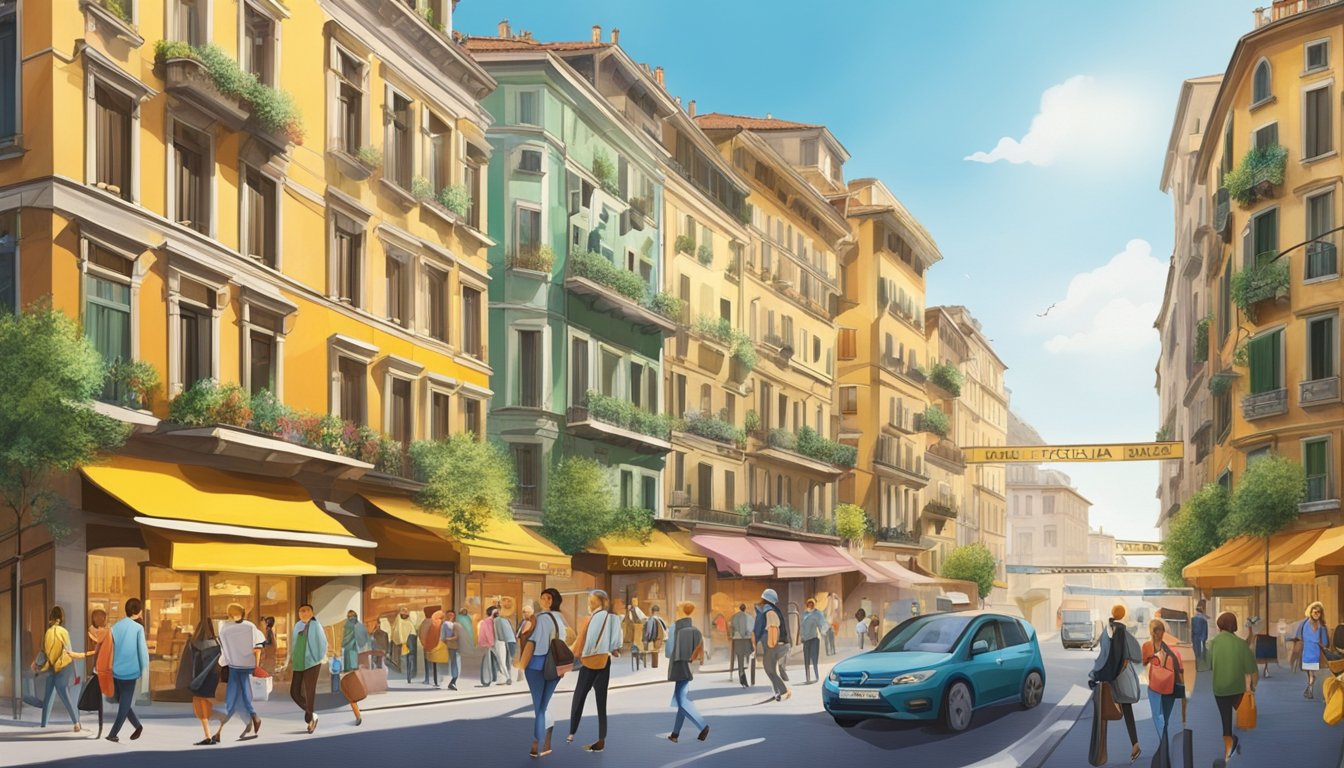
Understanding the legal and financial aspects of renting or buying in Milan is essential.
Real estate agencies can guide you through contracts, negotiations, and compliance with local laws, making the transition smoother.
They also provide insights into the different types of properties available in various neighborhoods, helping you identify the area that best suits your preferences for culture, convenience, and community.
Engaging with a reputable agency simplifies the search and provides peace of mind when making such a significant life decision.
Real estate agencies in Milan
Key Takeaways
- Exploring Milan’s varied neighborhoods is key to finding a home that aligns with your lifestyle.
- Partnering with a real estate agency can simplify the complex process of securing a property.
- Knowledge of local legalities and financial considerations is essential when renting an apartment in Milan.
Understanding the Milan Real Estate Market

When considering the purchase or rental of property in Milan, I recognize that the market here has unique characteristics.
Current Market Trends
In observing Milan’s ever-evolving real estate landscape, I’ve noted a marked increase in demand for properties, especially in central zones.
This robust appetite has led to a rise in luxury real estate transactions, signaling a healthy market for high-end residential spaces.
Recently conducted market analyses suggest that the first half of 2023 witnessed a dip in sales volume. However, this trend reflects broader economic conditions rather than a localized issue within Milan’s property sector.
The market’s dynamism means that buyers and sellers must stay informed of the latest developments, and houses and apartments in certain zones command differing levels of interest.
Pricing and Affordability
Prices in Milan are as varied as the city’s boroughs.
The cost of real estate hinges heavily on location, with the historical city center (Zone 1) being the most expensive.
In contrast, more affordable options can be found in Zone 9, the outskirts.
Apart from location, the housing type also sways the pricing—apartments in high-demand areas fetch a premium, while the cost may be more palatable in emerging neighborhoods.
For those seeking luxury properties, areas such as Brera and Quadrilatero della Moda offer an exclusive selection, albeit at a significantly higher cost.
To get a grasp of current pricing, consulting with seasoned real estate agencies such as Gabetti can prove invaluable.
Legal Aspects of Renting and Buying
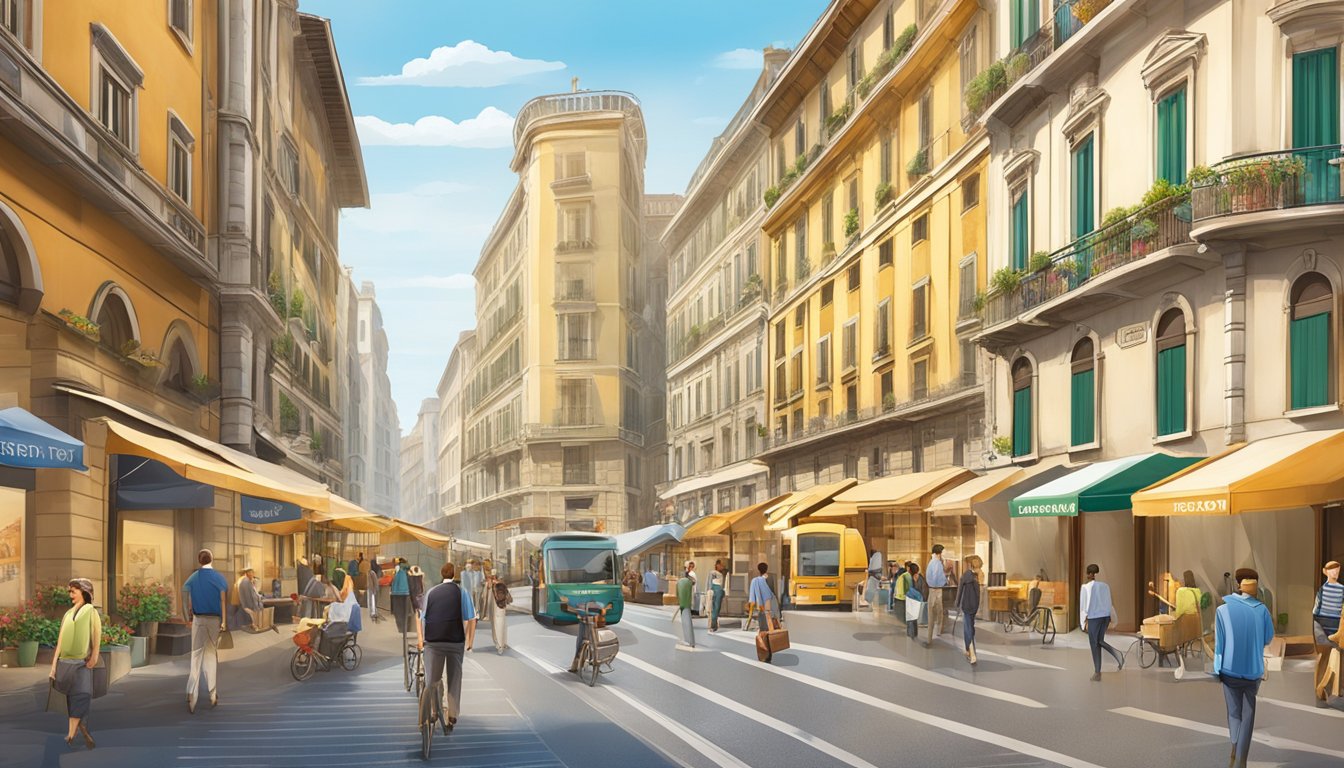
When looking to rent or purchase property in Milan, it’s crucial to understand the legal processes involved.
My focus will detail the Italian rental contracts and the property buying process, ensuring clarity on aspects like VAT, contract registration, and the roles of landlords and tenants.
Understanding Italian Rental Contracts
Italian rental contracts come in various forms, but “4+4” and “3+2” are standard types.
The “4+4” contract is a standard residential lease with an initial duration of four years, automatically renewed for another four unless terminated.
The “3+2” contract, tailored for temporary needs, lasts three years with an optional two-year renewal.
These contracts are subject to registration, which involves a fixed fee plus a percentage of the annual rent. The fee is typically divided between the landlord and tenant.
Additionally, tenants usually pay for utilities separately from the rent.
Learning about Skyline RE Milano’s services can provide more insights into rental agreements specific to Milan.
The Process of Buying Property
The process of buying property in Milan entails a few key steps.
Once my preferred property is selected, a proposal is made, and upon acceptance, a preliminary contract, or “compromesso,” is signed.
This agreement outlines the terms and involves a deposit, typically around 10-20% of the sale price.
VAT is applicable to new properties, while a registration tax is due for resale properties.
When finalizing the sale, a “rogito,” or final deed, is executed in front of a notary.
Notary fees, taxes, and additional costs such as agency fees also apply.
Diligent research offered by resources like Expat’s guide to buying property in Milan may prove invaluable to better understand the nuances of these proceedings.
Financial Considerations
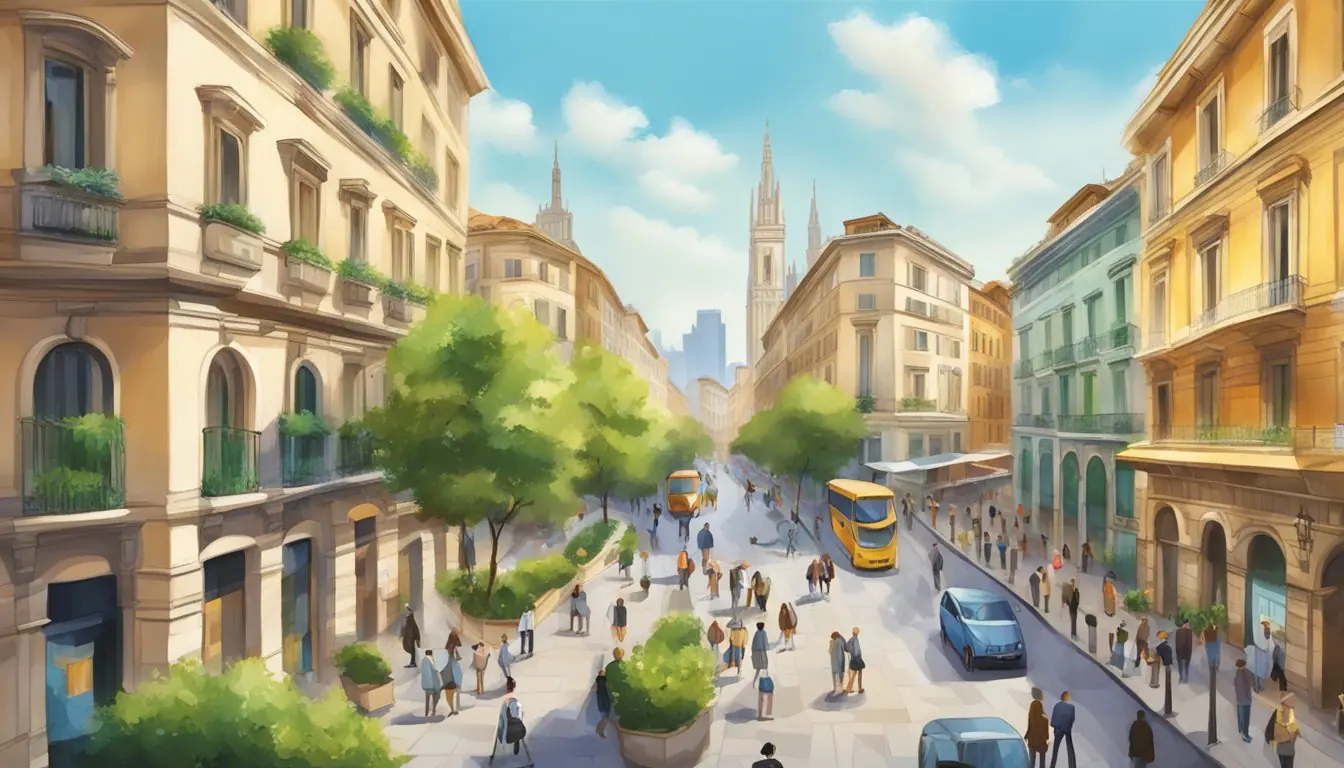
When searching for an apartment in Milan, I need to be fully aware of the financial responsibilities that come with renting.
This includes a clear understanding of how rent is structured, additional fees, the security deposit requirements, as well as the cost of utilities like AC, heating, and water.
It’s vital to account for these expenses to avoid any surprises during my tenancy.
Managing Utilities and Bills
The cost of utilities in Milan varies based on consumption and the type of accommodation I choose.
If the apartment has an AC system, the electricity bill may increase, especially during the summer. Heating costs in winter can also make a significant difference.
Typically, I can expect to pay an additional €50 to €200 per month on top of my rent for utilities, which often includes water, gas, and electricity.
Some landlords offer all-inclusive rental agreements, which can be found through websites like MilanoStyle.com, where most bills are included in the monthly rent. This option can simplify budgeting for monthly expenses.
Security Deposits and Fees
A security deposit is typically required when renting an apartment in Milan.
It’s usually equivalent to two to three months’ rent and is intended to cover any damages I might cause during my tenancy.
Agencies may also charge additional fees for their services, which should be factored into the initial cost of renting.
A comprehensive guide on what to expect when renting can be found at Renting an Apartment in Milan: The Ultimate Guide.
It’s crucial for me to read the rental agreement carefully and understand all the fees involved before signing to ensure I am not caught off guard by any additional expenses.
Types of Properties in Milan
Milan’s real estate landscape offers a diverse range of properties to suit every lifestyle, whether one is looking for a compact studio or a spacious house.
The decision between furnished and unfurnished units, or the luxury of an 80 m² flat versus a more modest apartment rental, can have a significant impact on your living experience in this vibrant city.
Choosing the Right Space
I consider the type of space that will best fit my lifestyle and needs when exploring Milano’s vibrant real estate offerings.
For those who value convenience and modern living, selecting a furnished apartment in the city center provides immediate comfort and ease of transition.
On the other hand, an unfurnished property may be appealing if I’m inclined to a more personal touch, filling the space with my own furnishings and decor.
Apartments Vs. Houses
In Milan, apartments are the dominant form of dwelling, especially within the city’s bustling districts.
A typical Milanese apartment, ranging from studios to multi-bedroom flats, offers a blend of contemporary living with historic charm.
For those craving more space or perhaps a garden, houses are more commonly found in the suburban areas, offering a quieter lifestyle away from the city’s fast pace.
To immerse in the height of sophistication, one might seek an 80 m² luxury apartment with high-end finishes and amenities, a testament to Milan’s position as a design capital.
For pragmatists, there are plenty of apartment rentals that balance comfort, location, and budget, ensuring there’s a perfect match for everyone’s preferences.
Popular Neighborhoods and Areas
In my exploration of Milan, I’ve discovered that each neighborhood has its unique charm and offerings.
Cultural and Dynamic Locales
Navigli is renowned for its picturesque canals and lively atmosphere. Here, the blend of historical charm and modern nightlife attracts both visitors and locals.
The area’s numerous restaurants and bars make it ideal for those seeking a vibrant social scene.
For shopping and art enthusiasts, Brera is a top choice. Often referred to as the artistic heart of Milan, this district boasts trendy boutiques, historic galleries, and a palpable creative energy.
Residential and Quiet Neighborhoods
On the quieter side of Milan, Giambellino and Certosa offer a more laid-back lifestyle. These neighborhoods provide a respite from the city buzz, featuring parks and traditional Italian eateries.
Meanwhile, Lodi, lying to the southeast of the city center, is another area worth considering for its tranquil streets and community feel. It’s suitable for families and those who appreciate a slower pace.
For a sophisticated mix of residential and commercial space, the City Life project in Lombardy stands out with its innovative architecture and modern amenities.
Living in Milan
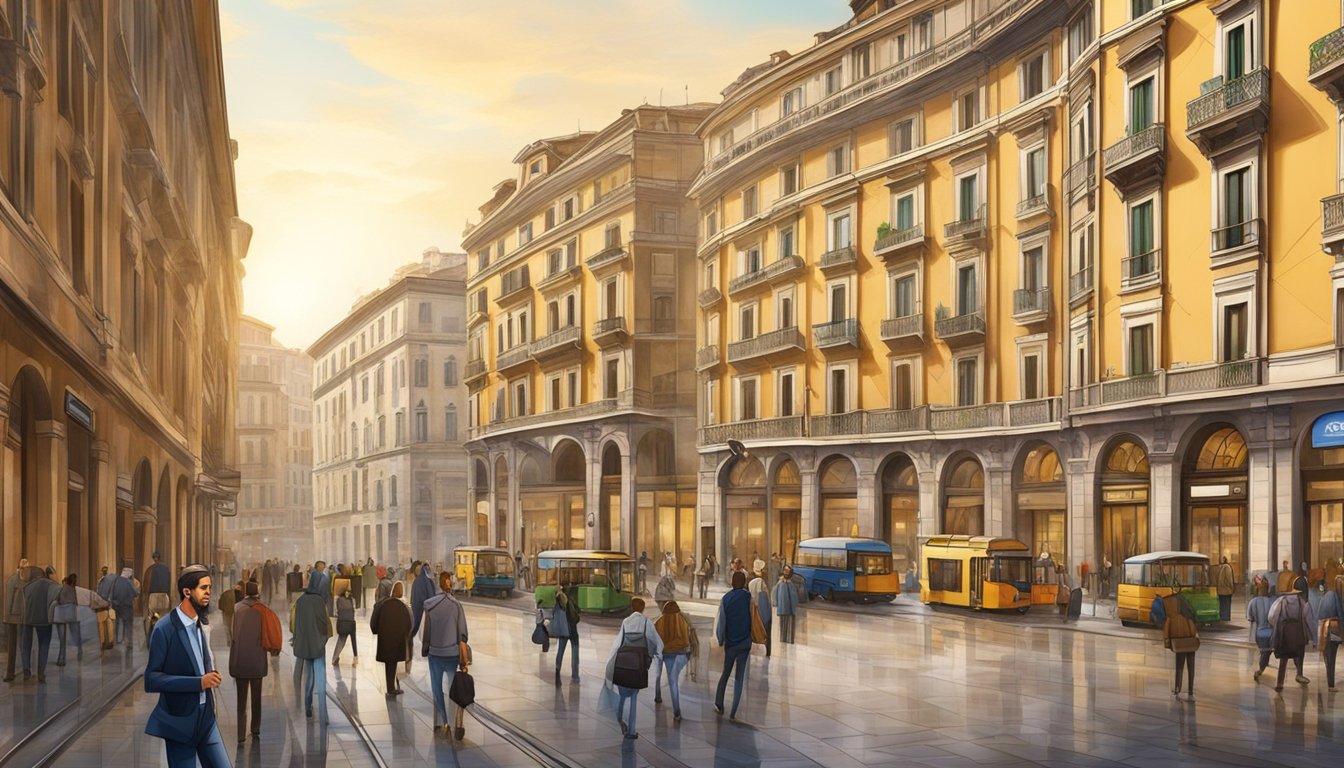
When considering a move to Milan, I emphasize two fundamental aspects: the efficiency of public transportation and the vibrancy of its cultural life.
Public Transportation and Accessibility
Milan’s well-developed public transportation system is essential for its residents. The city boasts an extensive network that includes the metro, trams, buses, and bikes, making every corner of the city accessible.
The MilanoCard offers tourists and locals alike the convenience of unlimited travel. I find that being able to reach the iconic Milan Cathedral or Leonardo da Vinci’s ‘The Last Supper’ without the hassle of driving personal vehicles underscores the city’s commitment to a commuter-friendly environment.
Culture, Amenities, and Lifestyle
Living in Milan offers a lifestyle infused with culture and modern amenities. As a fashion capital, it caters to fashion enthusiasts with events like Milan Fashion Week and scores of designer boutiques.
Milan’s nightlife is also vibrant, with an array of bars and clubs that keep the city alive after dark. For sports fans like me, the city is a haven with prestigious football clubs and sports events.
Natural parks within and around Milan, such as Parco Sempione, provide a break from urban life. Meanwhile, cinemas showcase everything from Hollywood flicks to indie films, reflecting the city’s appreciation for cinema.
Special Considerations
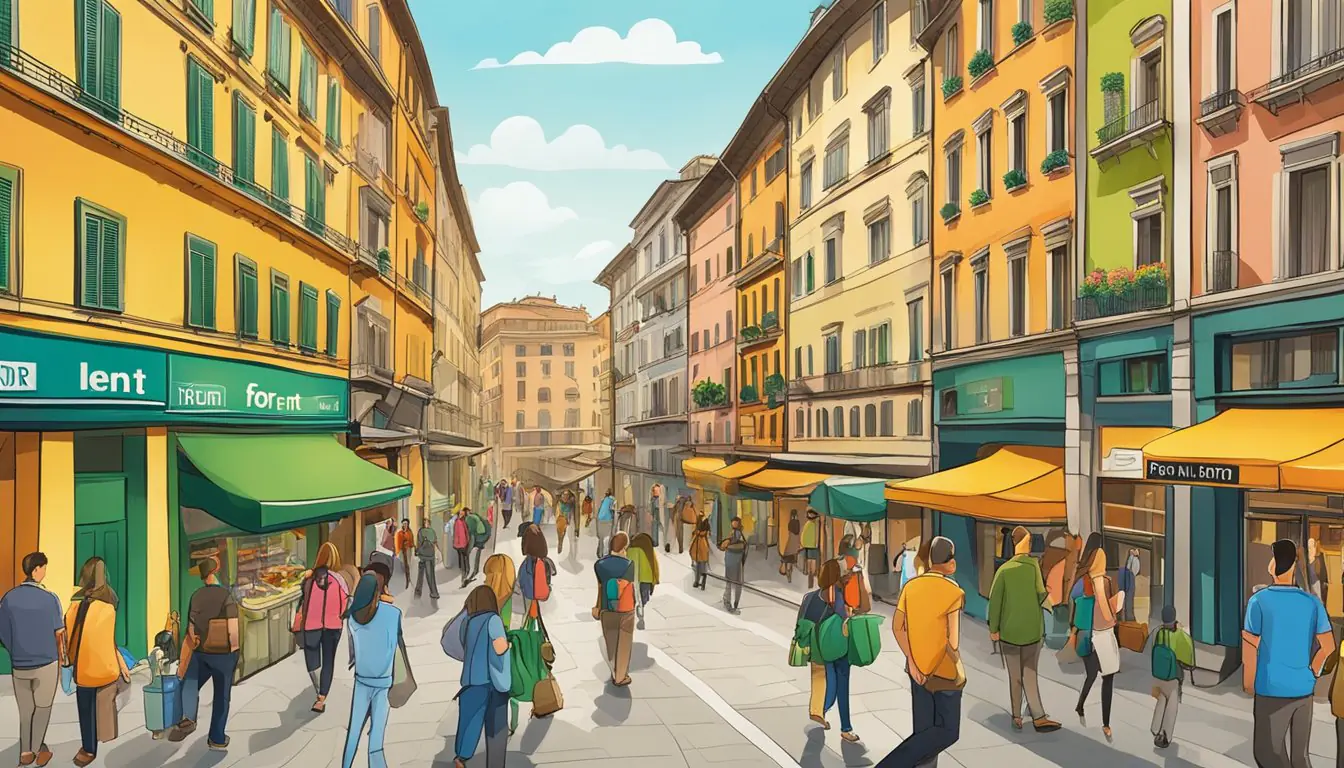
In Milan, the search for suitable accommodation must factor in peculiar conditions varying between students and professionals, each with distinct requirements and preferences.
Student Housing and Accommodations
I understand that students prioritizing proximity to their institutions such as Bocconi, Cattolica, Ied, or Marangoni may find convenient options in student housing.
My knowledge dictates that student accommodations tend to be more flexible, offering both short term and long term leases. It’s crucial for students to consider the distance from their university, access to public transport, and the overall affordability when renting.
Relocation for Professionals and Expats
When it comes to relocation for professionals and expats, the situation often requires a more tailored approach.
Many may seek assistance from relocation entities for a smooth transition. As a foreigner or expat, it is vital to consider legal requirements, access to company locations, and integration into the local community.
Long-term rentals are prevalent, but expats relocating for work might prefer a flexible lease, depending on their contract duration with their company.
Conclusion
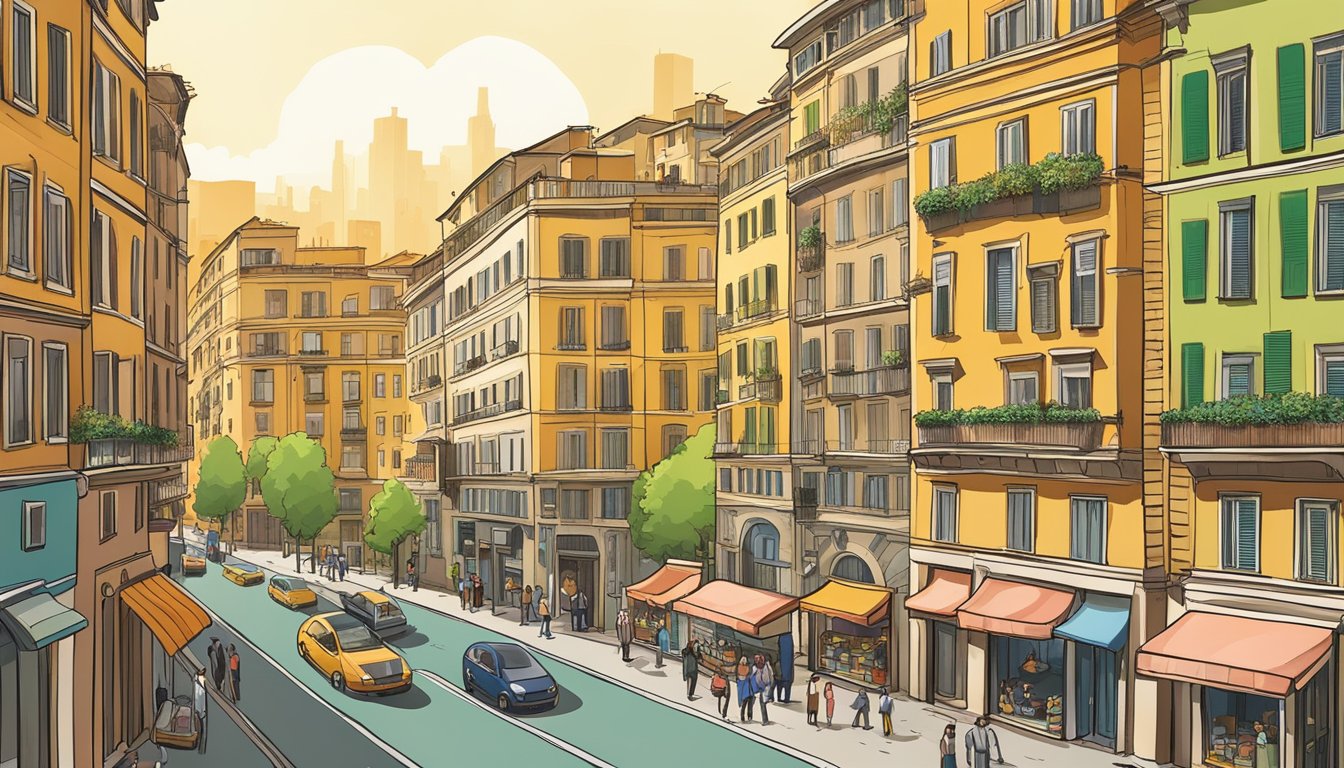
Finding the perfect apartment in Milan can be a challenging but rewarding experience. In my search for suitable housing, I have found that real estate agencies play a crucial role.
They offer professional services that cater to the diverse needs of clients, whether for residential or commercial properties.
Ease of access to quality housing is greatly facilitated by these agencies. By leveraging their expertise, I can navigate the complex European real estate market with confidence.
In Milan, which is a hub for both travel and business within Europe, securing the right accommodation is vital for a comfortable stay.
When considering housing options through agencies, it is important to assess the impact of location on daily life.
Agencies in Milan provide a variety of options that balance proximity to transportation hubs and commercial districts with tranquil residential areas. Here’s a quick recap:
- Real Estate Agencies: Essential for a guided search, especially for those unfamiliar with the local market.
- Professional Services: Agencies employ experienced professionals who understand the nuances of the Milanese market.
- Housing Quality: Emphasizes finding modern, well-maintained properties that align with my standards.
- Location: The impact on lifestyle is significant—choosing the right area can enhance my Milan experience.
In conclusion, utilizing the services of reputable real estate agencies like Renting Milan and ITALY IRL has been invaluable in my pursuit of finding the right apartment.
Through their assistance, I am assured of making an informed decision tailored to my needs, ensuring a smooth transition to life in this vibrant city.
Frequently Asked Questions
When renting an apartment in Milan, I understand it’s essential to be well-informed about the process. From choosing the right real estate agency to understanding the nuances of the Italian rental market, there are specific FAQs that you might find helpful.
What are the top-rated real estate agencies for renting an apartment in Milan?
For those looking to rent an apartment, agencies like MilanoStyle.com provide a wealth of knowledge. Additionally, exploring options through agencies listed on Idealista can help you find a suitable home.
What are the key steps to finding a long-term rental apartment in Milan, Italy?
The key steps include researching the market, setting a budget, identifying desired neighborhoods, sourcing listings through reputable agencies, scheduling viewings, and understanding the contractual terms.
Additionally, websites like Rental Milan offer guidance on booking apartments and determining departure dates.
Can a foreigner easily rent an apartment in Milan, and if so, what are the requirements?
Foreigners can rent apartments in Milan, but they will need to provide documents such as a valid passport, proof of income or employment, and sometimes a codice fiscale (Italian tax code).
Websites like MilanoStyle.com elaborate on the specifics of renting in Milan as a foreigner.
What is the average cost of renting an apartment in Milan?
The cost of renting an apartment in Milan varies widely depending on location and amenities. According to MilanoStyle.com, centrally located one-bedroom apartments range from €850 to €1400 per month.
Which neighborhoods in Milan are most popular among expatriates?
Neighborhoods like Brera, Navigli, and Porta Venezia are popular among expatriates for their vibrant culture and proximity to amenities. Idealista often features listings in these sought-after areas.
What online platforms are recommended for finding rental apartments in Milan?
Online platforms like Idealista, and Rental Milan are highly recommended for finding rental apartments.
They offer a variety of long-term options.
